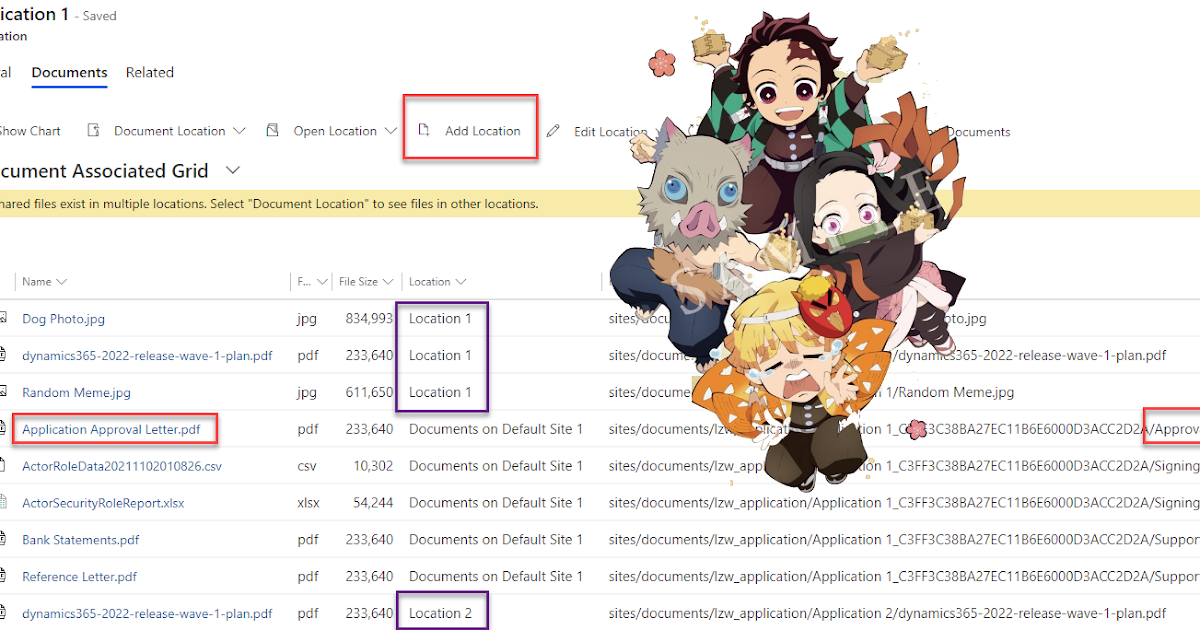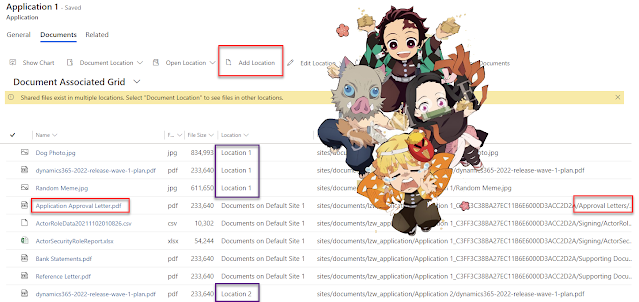Find SharePoint Folder with Particular Name Among Multiple Document Libraries Using Cloud Flow (Part 7 of 8)

<fetch>
<entity name="lzw_application">
<attribute name="lzw_applicationid" />
<filter>
<condition attribute="statuscode" operator="eq" value="859130000" />
</filter>
<link-entity name="sharepointdocumentlocation" from="regardingobjectid" to="lzw_applicationid" alias="DL4">
<attribute name="relativeurl" />
<link-entity name="sharepointdocumentlocation" from="sharepointdocumentlocationid" to="parentsiteorlocation" link-type="outer" alias="DL3">
<attribute name="relativeurl" />
<link-entity name="sharepointdocumentlocation" from="sharepointdocumentlocationid" to="parentsiteorlocation" link-type="outer" alias="DL2">
<attribute name="relativeurl" />
<link-entity name="sharepointdocumentlocation" from="sharepointdocumentlocationid" to="parentsiteorlocation" link-type="outer" alias="DL1">
<attribute name="relativeurl" />
<link-entity name="sharepointsite" from="sharepointsiteid" to="parentsiteorlocation" link-type="outer" alias="SPS">
<attribute name="absoluteurl" />
</link-entity>
</link-entity>
</link-entity>
</link-entity>
</link-entity>
</entity>
</fetch>
@{items('Apply_to_each_Document_Location_of_Application')?['SPS.absoluteurl']} encodeUriComponent(concat('/', items('Apply_to_each_Document_Location_of_Application')?['DL1.relativeurl'], '/', items('Apply_to_each_Document_Location_of_Application')?['DL2.relativeurl'], '/', items('Apply_to_each_Document_Location_of_Application')?['DL3.relativeurl'], '/', items('Apply_to_each_Document_Location_of_Application')?['DL4.relativeurl'])) length(body('Filter_array_for_Approval_Letters_folder')) encodeUriComponent(concat('/', items('Apply_to_each_Document_Location_of_Application')?['DL1.relativeurl'], '/', items('Apply_to_each_Document_Location_of_Application')?['DL2.relativeurl'], '/', items('Apply_to_each_Document_Location_of_Application')?['DL3.relativeurl'], '/', items('Apply_to_each_Document_Location_of_Application')?['DL4.relativeurl'], '/Approval Letters'))
Summary
Published on:
Learn moreRelated posts
Open an app in Power Automate Desktop
When you open an app in Power Automate Desktop, and you need to run this Power Automate Desktop flow multiple times it becomes important to ha...
Automating Business PDFs Using Azure Document Intelligence and Power Automate
In today’s data-driven enterprises, critical business information often arrives in the form of PDFs—bank statements, invoices, policy document...
Default retry settings in Power Automate
When actions in Power Automate flows go wrong, they may rerun depending on the failure occurred. One of the errors that may trigger is the 429...
Compress photos in Power Automate
One of my clients, takes many photos as part of their data entry process using a Canvas app. We need to compress the photos as the collected d...
Create MS Graph subscriptions in Power Apps without Power Automate
A while back I wrote a post about MS Graph subscriptions in Power Automate. Today I managed to do this directly within Power Apps.
Input and Output Parameters for Child Flows in Power Automate
In this post, I will look at the input and output parameter types for child flows. Recently I hit a couple of small issues with the various d...
5 fundamental Power Automate ideas that will make your flows better!
It's time to have a look at some of my older posts. In this post I'm going to have another look at these Power Automate ideas. Back in 2017/20...






